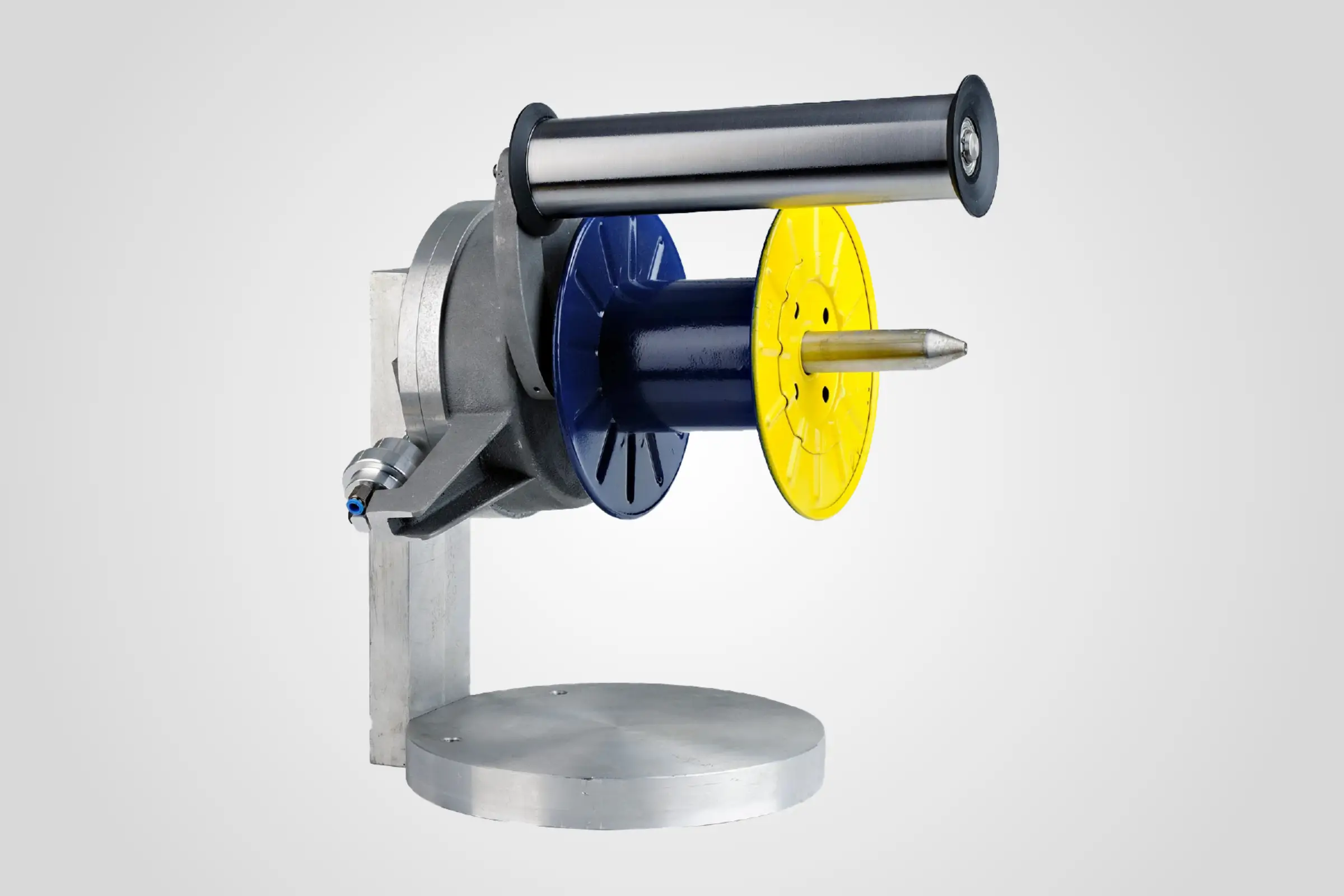
Eddy current brake
Increasing braking force with increasing speed.
Eddy current brakes from Tridelta Magnetsystme
They operate wear-free, maintenance-free, contactless and have an almost unlimited service life under normal conditions.
The eddy current brake is used when a braking effect is required above a certain speed in order to limit the speed or to increase the torque with increasing speed.
Advantages/Properties
- wear-free, since contactless
- Electroless, which means: fail-safe, low-maintenance, sustainable
- no follow-up costs
- the braking torque increases with increasing speed
- High braking force at high (rotational) speeds
- noiseless
Field of application Eddy current brake Function
The special feature of the eddy current brake is that its braking force increases with increasing speed. This type of brake has a very low torque at low speeds. The maximum braking torque is only reached at very high speeds. The eddy current brake is used where the braking force is to depend on the rotational speed or velocity, where moving masses have to be braked or accelerated quickly without generating a lot of heat, and where non-contact, wear-free operation without energy supply is desired.
Classic field of application
- Rail cars, fitness equipment, rides, etc.
- Damping profiles for doors in buildings, vehicles, ships, windows, drawers, etc.
- Belt rewinder, hose rewinder, cable rewinder
- Continuous material to be unwound (wire, textile, PVC, …)
Versions Eddy current brake Function
Tridelta supplies various dimensions with different braking torques directly from stock. These brake systems are standard products and consist of magnetic and eddy current disc, some with housing. Shafts and bearings must be provided by the customer.
Mechanically controlled tension
- Application: Tension control for continuous material to be uncoiled, such as wires, threads, tapes, paper in the tire, sheet metal, plastics and textile industries.
- Desired braking torque mechanically adjustable
- Maximum braking torque can be changed by selecting the material for the magnetic and eddy current disk, as well as by changing the geometry
- Braking torques: up to 10 Nm at 100 rpm as standard, above this after consultation
Fixed braking torque
- Field of application: damping profiles, vehicle brakes, measuring instruments
- Changing the braking torque by changing the air gap, possible here using spacers between the eddy current disk and magnetic disk (requires opening the housing)
- Depending on the size, the maximum braking torque can be changed both by the air gap and by the choice of material for the magnetic and eddy current disk
- Braking torques: up to 10 Nm as standard, above this after consultation
Functionality
In the eddy current brakes built by Tridelta, a non-magnetized eddy current disc is opposed by a permanent magnetic disc. Depending on the application and the desired torque, the material combinations are varied, e.g. copper for the eddy current disk or neodymium-iron-boron for the magnetic disk. There is a small air gap between the discs. If necessary, it is possible to easily control the torque by changing the distance between the two pulleys.
Since the braking torque for this type of brake is only generated by a relative speed between the drive and the stationary brake side, the transmitted torque increases with the relative speed. During application, it must be noted that eddy current brakes heat up with increasing speed. Therefore, if the speed exceeds 1000 rpm, cooling should be provided.
With the magnetic eddy current brake, Tridelta has developed a new patented permanent magnet brake that combines all the advantages of a conventional permanent magnet brake with a simple mechanical control unit – without costly and complicated electronic control. In the magnetic eddy current brake, a movable deflection roller keeps the tensile stress in the material constant. The desired tension is set via a compressed air mechanism.
Permanent magnetic eddy current brakes are offered by Tridelta as standard with braking torques up to 8 Nm. In addition, customer-specific solutions can be developed and implemented.